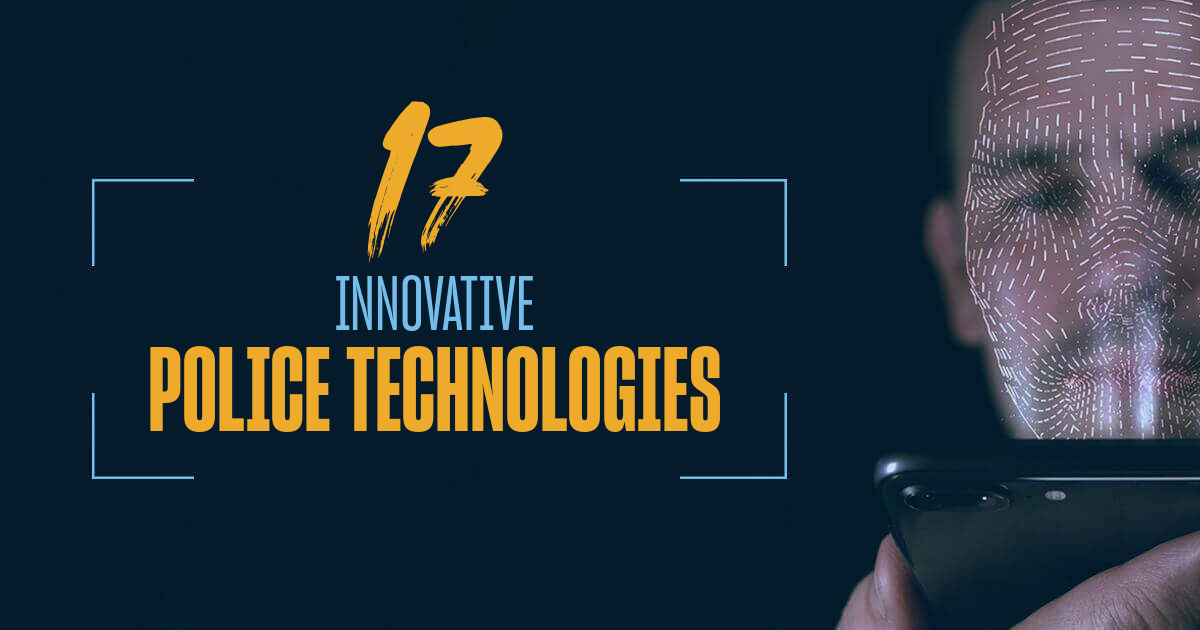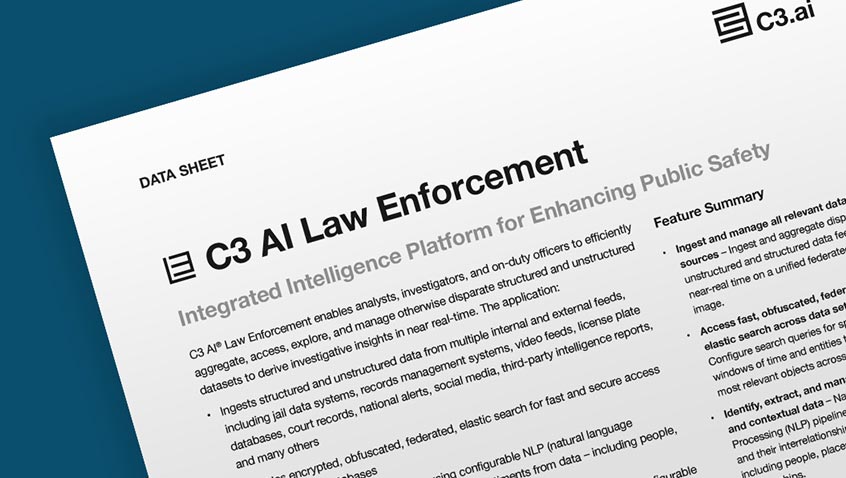AI enhances public safety by predicting crime hotspots and assisting in real-time surveillance. It aids law enforcement in solving cases efficiently.
AI is revolutionizing public safety and law enforcement. Predictive policing algorithms analyze data to forecast crime patterns. Real-time surveillance systems with AI can detect suspicious activities instantly. Facial recognition helps identify criminals quickly. AI-driven tools assist officers in gathering and analyzing evidence.
These technologies reduce response times and increase efficiency. AI also helps in managing large data volumes, providing actionable insights. This integration of AI ensures communities are safer. Law enforcement agencies can allocate resources more effectively. The role of AI in public safety continues to grow, promising a safer future for all.

The Advent Of Ai In Public Safety
The role of AI in public safety is growing. AI helps in many ways. It makes our lives safer. Law enforcement uses AI to stop crimes. AI can also prevent accidents. This tech is new but powerful. Here are some ways AI helps us stay safe.
Early Applications In Surveillance
In the past, cameras watched over areas. But, it was hard to check all the footage. Now, AI helps. AI can look at many cameras at once. AI can find faces and track people. This helps catch bad guys faster.
AI can also see things humans miss. AI can find weapons in a crowd. AI can see if someone is acting strange. All this helps police catch bad guys quickly.
Real-time Data Analysis For Crime Prevention
AI can look at data fast. AI can see patterns in crime. Police can use this info to stop crimes before they happen. AI can also help in emergencies. AI can find the fastest way to get to the scene. This saves time and lives.
AI can look at social media too. AI can find threats online. This helps police stop bad guys before they act. AI makes it easier to keep everyone safe.
Ai-driven Predictive Policing
AI-driven predictive policing uses advanced algorithms. It helps law enforcement predict and prevent crimes. This technology analyzes data to find crime patterns.
Algorithmic Crime Mapping
Algorithmic crime mapping creates digital maps of high-risk areas. Police use these maps to patrol more effectively. This method helps allocate resources efficiently.
- Identifies hot spots
- Improves patrol routes
- Reduces response time
Crime mapping also helps in identifying trends. It allows officers to focus on areas needing attention. This reduces the chances of crime.
Ethical Considerations
Ethical considerations are crucial in AI policing. Ensuring fairness and transparency is important. Bias in data can lead to unfair targeting.
| Concern | Solution |
|---|---|
| Data Bias | Use diverse data sets |
| Privacy | Implement strict data policies |
| Transparency | Open algorithm audits |
Ensuring ethical use of AI builds public trust. It helps communities feel safer.
Facial Recognition Technology
Facial Recognition Technology is transforming public safety and law enforcement. This technology identifies individuals by analyzing facial features. It enhances security measures, streamlines operations, and supports crime prevention. Facial recognition systems use AI algorithms to match faces against large databases. This technology is crucial for modern policing.
Enhancing Identification Processes
Facial recognition speeds up the identification process. Police can quickly identify suspects and missing persons. This technology reduces human errors. It provides accurate and reliable results. Officers can access data in real-time. This helps in making swift decisions.
Airports and public places use facial recognition for security. It ensures only authorized individuals enter restricted areas. The technology also aids in verifying identities during investigations. This results in faster case resolutions.
Balancing Privacy With Security
Balancing privacy and security is vital. Facial recognition must respect individual rights. Law enforcement agencies follow strict guidelines. They ensure data is used responsibly. Transparency and accountability are essential.
Public concerns about privacy are valid. Authorities must address these concerns. They should provide clear information on data usage. Encryption and secure storage of data are necessary. This builds trust and public confidence.
Here are some key points to consider:
- Use facial recognition only for serious crimes.
- Implement strict data protection measures.
- Ensure transparency in operations.
- Regularly audit and review the systems.
Facial recognition technology holds great potential. It enhances public safety and law enforcement. A balanced approach ensures both security and privacy are maintained.
Ai In Cybersecurity Defense
AI is transforming cybersecurity, making it stronger and smarter. It helps protect our data and systems from cyber threats. AI can analyze data quickly and spot dangers before they cause harm. This makes our digital world safer.
Automating Threat Detection
AI can automate threat detection to keep us safe. It scans data for patterns that look suspicious. This way, it can find threats faster than humans. AI learns from past attacks to better detect future ones. It does this all day and night, without breaks.
Here are some ways AI automates threat detection:
- Analyzing large amounts of data quickly
- Identifying unusual behavior in systems
- Sending alerts when it finds threats
- Learning from past attacks to improve
Protecting Critical Infrastructure
AI plays a key role in protecting critical infrastructure. These include power grids, water systems, and communication networks. Protecting these systems is crucial for public safety.
AI helps by:
- Monitoring network activities
- Detecting attempts to break into systems
- Responding to threats in real-time
- Predicting future attacks based on data
AI ensures that our essential services stay safe from cyber threats. This keeps our communities secure and functioning.
Drones And Robotics In Rescue Operations
Drones and robotics have transformed rescue operations. They offer quick, efficient and safe solutions. This technology helps in dangerous and hard-to-reach areas.
Search And Rescue Advancements
Drones can scan large areas quickly. They use thermal imaging to find lost people. This reduces the time needed for search missions. They can fly over forests, mountains, and rivers. They send real-time data to rescue teams.
Robots help in search operations too. They can go into collapsed buildings. They check for survivors in dangerous places. Robots are equipped with cameras and sensors. These tools help them find people trapped in rubble.
Disaster Response And Mitigation
In disaster zones, drones provide vital assistance. They assess damage after earthquakes, floods, or fires. Drones map affected areas. This helps teams plan their response.
Robots play a key role in disaster response. They can deliver supplies to trapped people. They bring food, water, and medical kits. Robots can also clear debris and make paths for rescue teams.
The combination of drones and robotics enhances public safety. They save lives and reduce risks for rescue workers. This technology is a valuable tool in modern law enforcement and public safety.
Ai For Law Enforcement Training
Artificial Intelligence (AI) is transforming law enforcement training. AI tools improve the skills of police officers. These tools help officers prepare for real-life situations. AI offers unique ways to train and educate officers efficiently.
Simulated Scenarios And Decision-making
AI provides simulated scenarios for training. These scenarios mimic real-life events. Officers can practice in a safe environment. They face various challenges and learn to make quick decisions.
These simulations include traffic stops, high-speed chases, and hostage situations. Officers improve their skills without risk. Simulations help them make better choices in real situations.
AI tracks the decisions officers make during simulations. It analyzes their performance and provides feedback. This helps officers understand their strengths and weaknesses.
Improving Officer Readiness
AI tools help officers prepare for duty. These tools include virtual reality (VR) and augmented reality (AR). Officers can train anytime and anywhere. They can practice different scenarios repeatedly.
AI-powered training adapts to each officer’s needs. It identifies areas where they need improvement. Officers receive personalized training plans. This makes training more efficient and effective.
Adaptive learning is another key feature. AI adjusts the difficulty level based on the officer’s performance. This keeps the training challenging and engaging.
| AI Training Tool | Benefit |
|---|---|
| Virtual Reality (VR) | Offers immersive training experiences |
| Augmented Reality (AR) | Enhances real-world training scenarios |
| Adaptive Learning Systems | Personalizes training to individual needs |
AI improves officer readiness by offering continuous training. Officers can refresh their skills regularly. This ensures they are always prepared for any situation.
Challenges And Controversies
Artificial Intelligence (AI) is transforming public safety and law enforcement. Despite its benefits, AI presents unique challenges and controversies. Addressing these issues is crucial for effective implementation.
Addressing Ai Biases
AI systems can exhibit biases, impacting fairness in law enforcement. These biases often stem from historical data and human prejudices. To mitigate this, data used for training must be diverse and representative.
Regular audits and updates can help minimize biases. AI should undergo constant monitoring to ensure fairness. Transparency in AI processes can build trust and accountability.
Regulatory Frameworks And Oversight
Regulatory frameworks are essential for AI in law enforcement. Clear guidelines ensure the ethical use of AI technologies. Oversight bodies must enforce these regulations strictly.
Public input is vital in forming these regulations. Community engagement can help address concerns and build trust. Policymakers should work closely with technologists and ethicists.
| Challenge | Solution |
|---|---|
| Bias in AI systems | Regular audits and diverse data |
| Lack of transparency | Open AI processes |
| Inadequate regulatory frameworks | Clear guidelines and oversight |
AI in law enforcement must balance innovation with ethical considerations. Addressing biases and establishing strong regulations are steps in the right direction.

Future Directions Of Ai In Safety
The role of AI in enhancing public safety is evolving rapidly. The future holds immense potential for even greater advancements. These advancements will ensure safer communities and more efficient law enforcement. Let’s explore two key areas: integrating AI with IoT and evolving public policy and AI governance.
Integrating Ai With Iot
Integrating AI with IoT creates a powerful combination. This combination can significantly boost public safety. Smart sensors and AI-driven cameras can monitor public spaces in real-time. They can detect unusual activities and alert authorities instantly.
Connected devices like smart streetlights can adjust their brightness based on real-time data. This ensures well-lit streets and reduces crime rates. Wearable devices for law enforcement officers can monitor their health and location. This enhances their safety during operations.
| AI-Driven IoT Device | Function |
|---|---|
| Smart Cameras | Real-time monitoring and threat detection |
| Smart Streetlights | Adaptive lighting for crime reduction |
| Wearable Devices | Health and location tracking for officers |
Evolving Public Policy And Ai Governance
As AI technology advances, public policy must evolve. Clear regulations ensure responsible use of AI in public safety. Policies should address privacy concerns and data security. They must also ensure transparency in AI decision-making processes.
Governments and organizations need to collaborate. They should develop ethical guidelines for AI deployment. Public input and participation are crucial in shaping these policies. This ensures that AI technologies are used fairly and ethically.
- Addressing privacy concerns
- Ensuring data security
- Promoting transparency
- Developing ethical guidelines
- Encouraging public participation

Frequently Asked Questions
What Is The Role Of Ai In Law Enforcement?
AI aids law enforcement by analyzing data, predicting crime patterns, and enhancing surveillance. It helps in identifying suspects and solving cases faster. AI tools improve decision-making and resource allocation, enhancing public safety.
How Ai Can Improve Public Safety?
AI enhances public safety by predicting crimes, improving emergency response, and monitoring surveillance footage for suspicious activities.
How Will Ai Change Policing?
AI will enhance policing by predicting crime hotspots, improving response times, and analyzing large data sets for better decision-making. It will also assist in identifying suspects through facial recognition and monitoring public spaces for unusual activities. AI can make policing more efficient and proactive.
What Is The Role Of Ai In Crime Detection?
AI helps detect crime by analyzing data patterns, predicting criminal behavior, and identifying suspicious activities. It improves surveillance, facial recognition, and data analysis, aiding law enforcement.
Conclusion
Artificial Intelligence is revolutionizing public safety and law enforcement. Its capabilities enhance efficiency, accuracy, and response times. By leveraging AI, agencies can predict and prevent crimes more effectively. The future of public safety looks promising with AI-driven solutions, ensuring safer communities and improved law enforcement operations.
Embracing this technology is crucial for progress.





